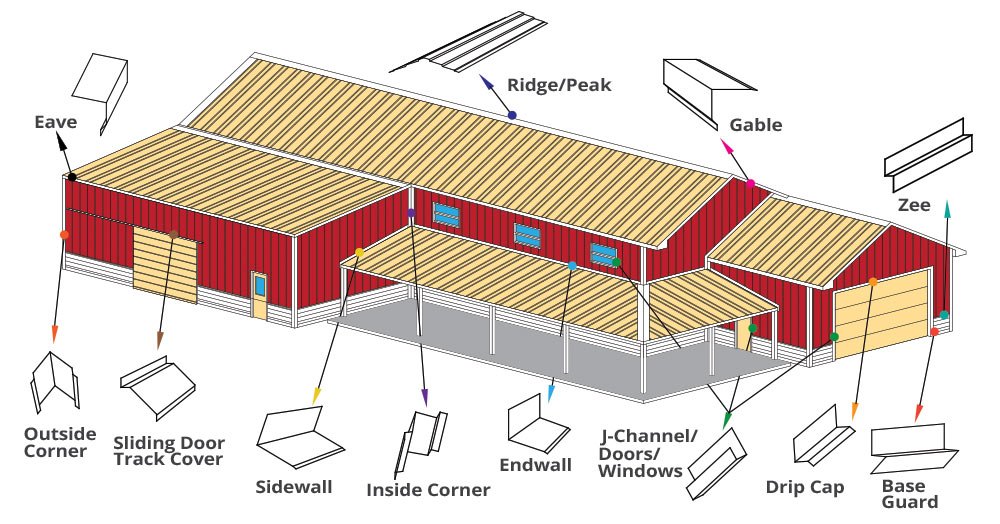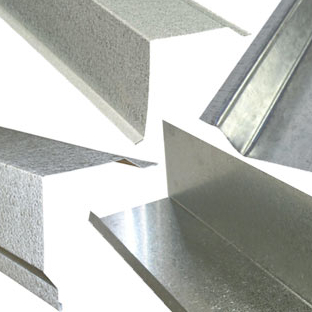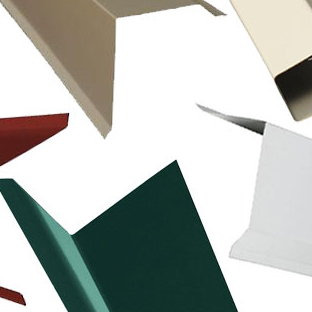Roofing trims provides a great way to combine stylish design with protection from moisture and the elements. Metal roof trim is used to seal joints and direct water away from the building, protecting the structure from moisture damage. This can occur wherever two roof panels come together, form a valley or intersection, or at the edge line where metal roof panels meet the endwall panels.
Metal Trims
There are many shapes of trim, here is an overview of the types of trim that are available for metal roofs, as well as information regarding their form, function, and benefits. Click on the name of the trim to expand information
(also called ridge rolls) are an attractive addition to any sloped metal building. In addition to finishing the juncture where two roof caps come together at the apex of the slope, they also protect the building from moisture penetration. If your metal roof includes ridge vents for energy efficiency, the vented closures can be used in conjunction with ridge caps.
These finishing pieces are metal flashing that is used along the edges of the roof line where the edge of the roof panel meets the endwall panels.
This is installed at the very edge of the roof panels to create a finished look. However, gutters can also be installed in place of the eave trim in order to direct rainfall and snow melt into the downspouts. Gutters are especially important over entrances and exits to avoid the waterfall effect during and after a rain storm, or when snow melt creates water runoff.
Downspouts are installed along the gutters to direct the water from the gutters to the grounds, and away from the building and its foundation.
You may also see wall to roof transitions listed as sidewall trim pieces. They are used to create a finished look at wall to roof junctures. This is common in residential structures where an attached garage wall meets a higher wall of the main house or in multi-story buildings.
You may have two sections of your roof that meet to form a valley such as when roof panels meet to form a gable. The valley flashing is used underneath the roof panels to keep water from getting beneath the panels and infiltrating the structure. Valley flashing will guide the water down off the roof and/or into the gutters.
When a roof slope changes, such as when your sloped roof meets an eave, a transition trim piece is required. Similar to valley flashing, transition trim is used to guide water away from the roof, preventing it from getting underneath your roof panels.
Metal roofing trim typically connects best to PBR / Texas rib panel, which is the most popular metal roofing panel. It is durable and relies on exposed metal fasteners. However, regardless of your selection of metal roofing panels, metal roofing trim is available in a number of different colors to match the rib roofing of your roof.

 English
English Español
Español




